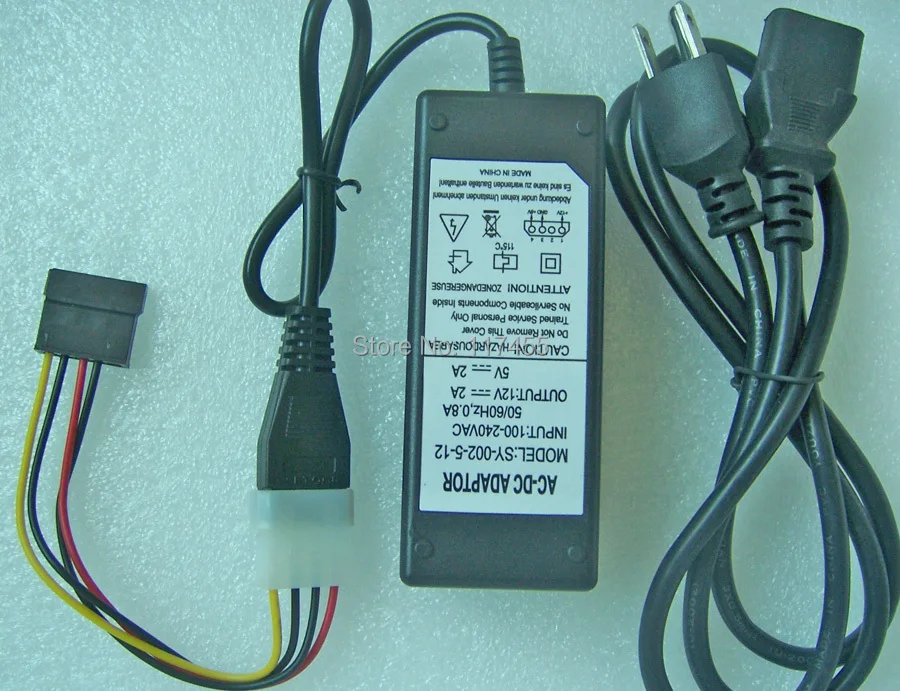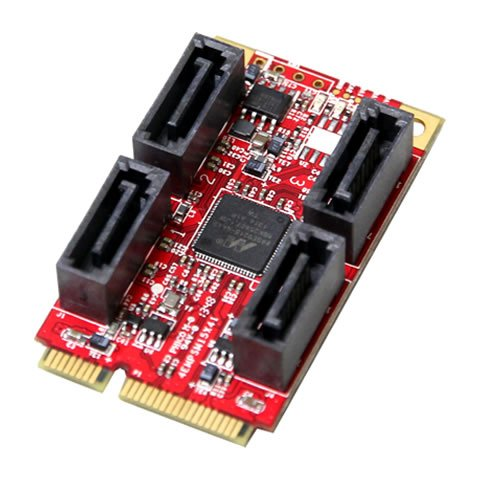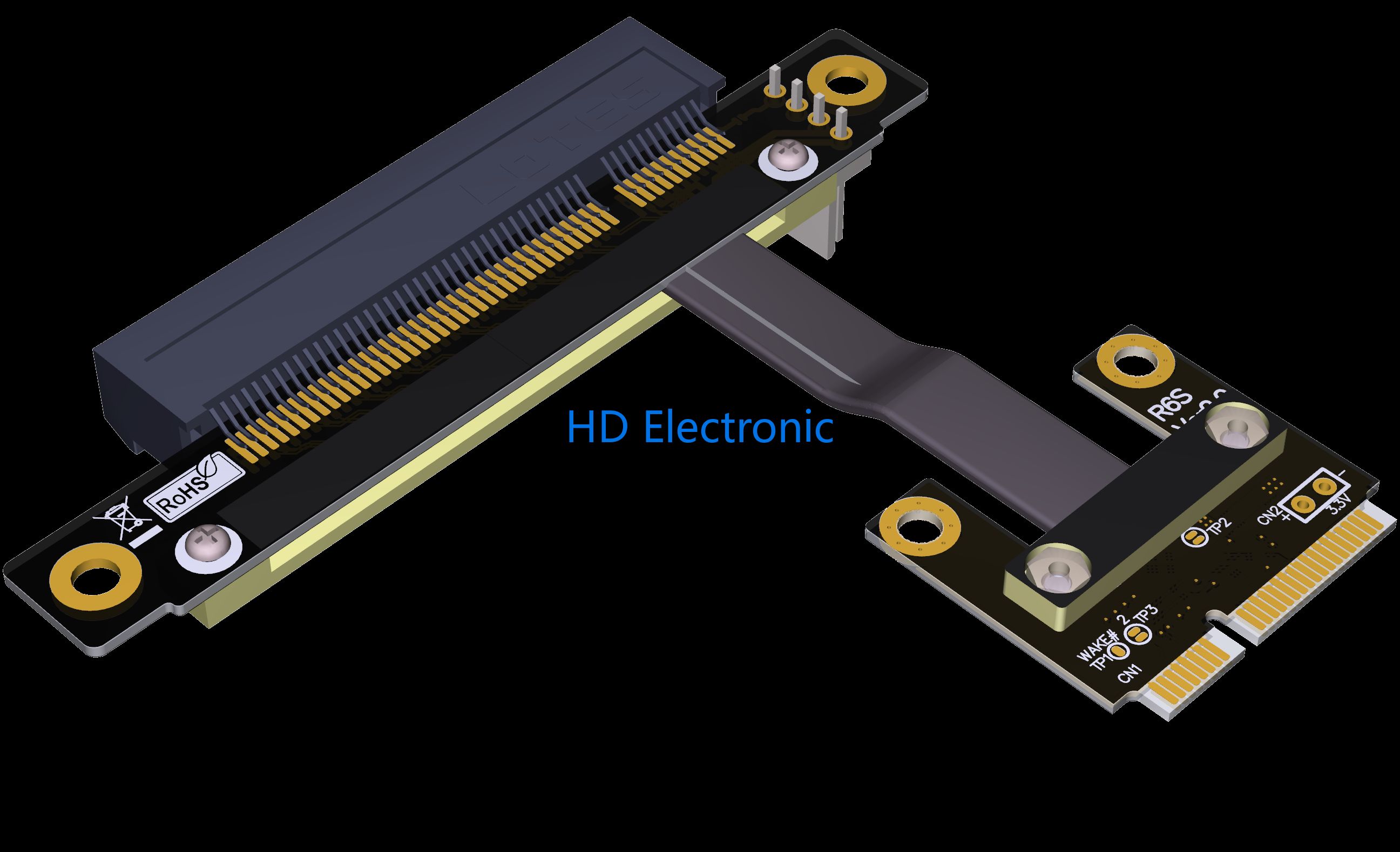First of all, thank you so much for your great answers under my post from yesterday! They were really really helpful!
I’ve now decided that I will not use something with USB. It really doesn’t seem to be reliable enough for constant read-write-tasks, and I don’t wanna risk any avoidable data loss and headache.
Also, it just doesn’t seem to be very future proof. It would be pretty expensive, only for it to get replaced soon, and then getting obsolete. It just seemed like a band-aid solution tbh. So, no USB hard drive bay, no huge external hard drive, and no NAS just for that purpose.
A few people asked me about the hardware.
My server is a mini-PC/ thin client I bought used for 50 bucks. I’ve used it for about two years now, and it had even more years of usage under the belt with its’ former owner. Imo, that’s a very sustainable solution, that worked pretty well until now.
I used it almost exclusively for Nextcloud (AIO), with all the data being stored in the internal 1 TB SSD.
For those who are interested, here are all the hardware details:
<hwinfo -short>

Thing is, I want to get more into selfhosting. For that, my main goal is to
a) Replace Nextcloud with individual (better) services, like Immich and Paperless-ngx.
NC-AIO was extremely simple to set up and worked pretty fine, but I always found it to be bloated and a bit wonky, and, mainly, the AIO takes up all my network and resources. I just want something better, you understand that for sure :)
b) Get more storage. I’m into photography, and all those RAW photos take up SO MUCH SPACE! The internal 1 TB is just not future proof for me.
c) Maybe rework my setup, both in software, and maybe in hardware. Originally, I didn’t plan to screw everything, but I think it might be better that way. The setup isn’t bad at all, but now, as I got more experience, I just want it to be more solid. But I’m not sure about doing that tbh, since it really isn’t a lost case.
As someone already mentioned in the last post, I really don’t have a million bucks to create my own data center. I’m not completely broke, but almost :D
Therefore, I just want to make the best out of my already existing hardware if possible.
Because I decided against USB, and because I don’t know if there are any slots on the mainboard that can be repurposed for additonal storage, I need your advice if there are any options to achieve that, e.g. via a PCIe slot + adapter, if I had any.
I saw one SATA III port, but that one really isn’t enough, especially for extendability.
Here are the photos from both the front and back side:


My thought was, instead of buying one hella expensive 3+TB SSD drive, just screw it and make something better from scratch.
So, if you guys don’t give me a silver bullet solution, aka. “you can use this slot and plug in 4 more drives”, I will probably have to build my own “perfect” device, with a great case, silent fans, many storage slots, and more.
Btw, do you have any recommendations for that? (What mainboard, which case, etc.) Preferably stuff that I can buy already used.
Thank you so much!
It’s a Fujitsu W26361 There isn’t a lot of info about it on the net, all the links are rotten.
You have a sata port. You have to use an external power supply for that. Or maybe one of the pins next to it can supply the required voltage, you can use a multimeter to figure it out if you are brave. I guess the white one labeled PWR should be supply some volts. To be safe you can split the power of the other sata ssd or buy something like this:

You also have 2 an mPCIe or mSATA port. It’s impossible to tell the difference from a photo, because they use the same connector.
https://en.wikipedia.org/wiki/PCI_Express#Mini-SATA_(mSATA)_variant
Without any more knowledge I would guess at least one of them is an mPCIe. Having 2 sata ports and an 2 mSATA next to it would be strange, they could use the mPCIe for a 3G modem or wifi, it would make more sense in a thin client like this.
If it’s an mPCIe you can buy a sata expansion there and even connect up to 4 sata drives. Looks like something like this:

You can convert it to normal PCIe or m.2, the possibilities are endless:


If it’s not mPCIe but mSATA, you can buy mSATA SSD there, they are really rare nowadays. Or you can buy an mSATA to SATA adapter:

Yeah this is what OP wants. I run an unraid array with two pci expansion cards to add in 8 more drives. They’re more robust than an equivalent USB array (I think?) and allow for much higher speeds.
That SATA port is what you need. You can use that to connect an external eSATA drive enclosure (external jbod).
For a clean install, get a SATA to eSATA adapter - the kind with an expansion slot plate. Something like a STCESATAPLT1LP. Unscrew the eSATA end from the plate, cut a matching hole in the PC case and mount the port to the hole. This is better than going straight from the internal port in my opinion.
It looks like you have a mini-PCIe slot as well, probably intended for WiFi. That may work with an mSATA to SATA adapter to give you a second port. Or it may work with an mSATA SSD. I would test with something cheap or get confirmation it works from other users of this PC before investing in an expensive SSD.
From what I can see, it looks like you have a SATA connector, though the power for it may need a special breakout, and an mSATA connector, both in the second photo
Been using USB since forever. I have one USB3 jbod with four SSDs (2 RAID1 + 2 RAID1) and an USB-C double enclosure with two spinning disks (RAID1 as well)
Setup is running flawless since 2016 at the very least, but I was using USB even before that timeframe.
All the RAIDs are Linux software RAID.
Acronyms, initialisms, abbreviations, contractions, and other phrases which expand to something larger, that I’ve seen in this thread:
Fewer Letters More Letters PCIe Peripheral Component Interconnect Express SATA Serial AT Attachment interface for mass storage SSD Solid State Drive mass storage
3 acronyms in this thread; the most compressed thread commented on today has 11 acronyms.
[Thread #923 for this sub, first seen 16th Aug 2024, 15:05] [FAQ] [Full list] [Contact] [Source code]
I know you said you decided against it, but perhaps reconsider USB?
I was facing the same dilemma a few months ago, and ultimately decided that trying to break out those internal connections wasn’t worth it. The problem with these tiny PCS is that they are not designed with arrays of drives in mind. There’s typically not enough room in the case to properly add an additional drive, so you end up running the sata cord through a hole in the case and using an external drive and power supply anyway.
USB on the other hand, is intended to connect to an external device. The connectors themselves are more robust and they can even supply power.
I use my external drive for data I don’t have to access constantly, like templates and backups. 90% of the time it’s just sitting in standby. If you need to access a lot of data constantly, you might start to notice the slower USB speeds; if you can segment your data, keeping your “working” files on the internal drive and just use the external for storage, you probably won’t notice the USB at all. It’s certainly not the perfect solution, but with your particular restrictions, it might be the better tool for the job.
The other option would be Network Attached Storage, essentially a low power computer that just exists to allow other computers to access its storage. You can probably find an old, cheap desktop PC for sale locally, likely for less than it would cost you to bring out those internal ports and buy a drive enclosure and power supply.
Buy a better case for the mobo. I modded once an mITX motherboard to an ancient HP Proliant microserver case, it’s not that hard. Mobos like this doesn’t have standard screw distances, but you don’t have to secure all screws in a ghetto server. 2 screws and some padding is enough, with 3 screws you are overengineering.




